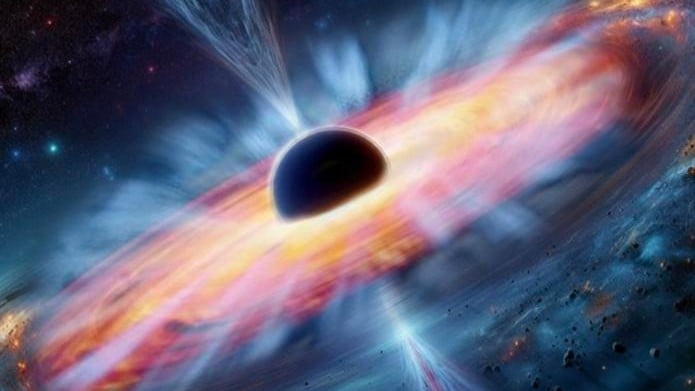New research provides evidence for how supermassive black holes at the centers of the universe’s first quasars managed to grow to enormous sizes in less than a billion years after the Big Bang, potentially defying known physical limits.
Published in Astronomy & Astrophysics | Estimated reading time: 6 minutes
A team led by researchers at Italy’s National Institute for Astrophysics has analyzed 21 of the most distant quasars ever discovered, using X-ray observations from the XMM-Newton and Chandra space telescopes. Their findings suggest these cosmic titans grew through periods of extremely rapid matter consumption that pushed against the boundaries of physics.
Quasars are incredibly bright objects powered by supermassive black holes actively consuming surrounding matter. The ones in this study date back to when the universe was less than a billion years old, yet their central black holes had already grown to billions of times the mass of our Sun.
The researchers found an unexpected relationship between the temperature of the gas near these black holes and the speed of winds being ejected from the quasars. “Our work suggests that the supermassive black holes at the centre of the first quasars formed within the first billion years of the Universe’s life may have actually increased their mass very rapidly, challenging the limits of physics,” explains Alessia Tortosa, the study’s lead author.
The study revealed that quasars emitting lower-energy X-rays, indicating cooler temperatures in their corona (the region closest to the black hole), displayed faster-moving winds that could reach thousands of kilometers per second. This pattern suggests these black holes were growing at an extraordinary rate that exceeded what’s known as the Eddington limit – a theoretical maximum for how quickly a black hole can consume matter.
The findings emerged from approximately 700 hours of observations collected between 2021 and 2023 as part of the HYPERION project, which studies extremely luminous quasars from the cosmic dawn. “In the HYPERION program, we focused on two key factors: on one hand, the careful selection of quasars to observe, choosing the titans, meaning those that had accumulated as much mass as possible, and on the other hand, the in-depth study of their properties in X-rays,” says researcher Luca Zappacosta.
This research provides crucial insights for future X-ray missions planned by ESA and NASA between 2030 and 2040. Understanding how these first supermassive black holes formed and grew so rapidly is essential for explaining the early development of galaxies and the structure of the universe we see today.
Glossary
- Quasar
- An extremely bright, distant object powered by a supermassive black hole actively consuming matter.
- Eddington limit
- A theoretical maximum rate at which a black hole can consume matter, beyond which the force of radiation should push material away.
- Corona
- The extremely hot region closest to a black hole where X-rays are produced.
Test Your Knowledge
What was the relationship discovered between X-ray energy and wind speed?
Answer: Quasars emitting lower-energy X-rays showed faster-moving winds.
How many quasars were studied in this research?
Answer: 21 quasars
How many hours of observations were collected for the HYPERION project?
Answer: Approximately 700 hours
When were these quasars observed in the universe’s history?
Answer: When the universe was less than a billion years old
Enjoy this story? Subscribe to our newsletter at scienceblog.substack.com


